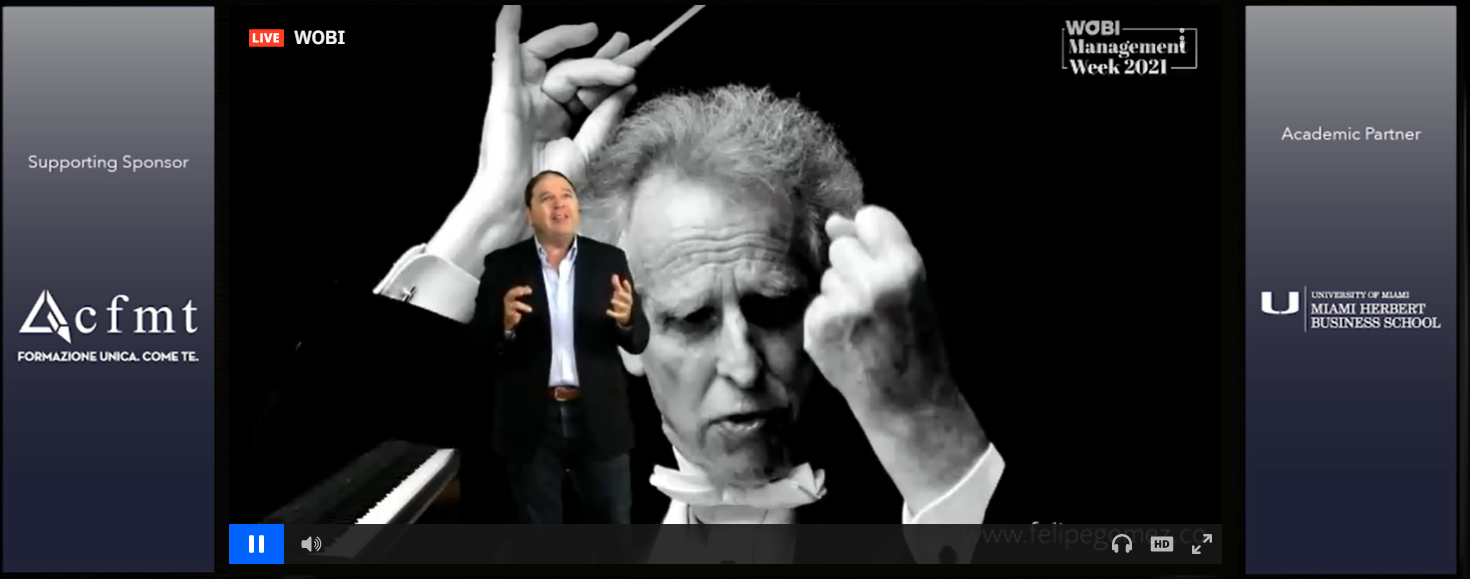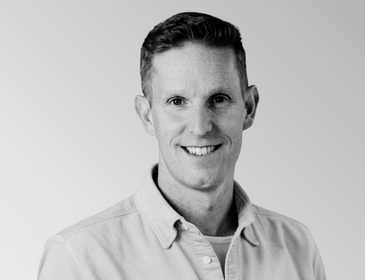Day 2: WOBI Management Week Recap
Over four days this week, a diverse range of business leaders and transformational thinkers are convening online for WOBI Management Week 2021. Acertitude is excited to be in attendance to summarize for our readers what trends, topics, and predictions are top of mind for global business leaders right now. On that note, here are three key takeaways from Day 2 of the event where conversations on talent management and post-pandemic resilience were top of mind. (Missed our Day 1 recap? Read it here.)
1. Master virtual leadership
First to take the main stage was globally recognized business development researcher and educator, Ian Williamson, Dean of the School of Business at the University of California, Irvine. Ian touched on one of the most relevant topics to today’s business leaders — how strategic talent management can help organizations transition from surviving to thriving. He also explored how innovation sparked by a more diverse workforce – one made up of employees with different technical experience, life paths, backgrounds, and skillsets – can better prepare organizations to tackle strategic challenges.
Ian began by addressing how leaders can best prepare their organizations for the future, as businesses continue to manage new working paradigms and uncertainty. To remain resilient amidst disruption, develop a robust and strategically aligned talent pipeline, he said. In the battle to come out ahead of the global pandemic, leaders must make talent management decisions that enhance their organizational ability to face disruption head-on. Disruption was a word he defined as “shifts in the external environment that have the potential to render existing organizational strategies ineffective.”
We’re now operating in “The COVID-19 Era Workforce,” he continued, a workforce that is dispersed, diverse, and distressed. More people are questioning their relevance at work, he emphasized, with at least one in four workers (27 percent) expressing concerns about being replaced or removed by automation over the next five years. Simultaneously, feelings of sensitivity, controversy, and confusion in the workplace are arising as leaders address inclusion and diversity across workplaces, Ian noted.
Leaders must rethink how to acquire — and utilize – human capital.
Leaders are evaluated on how well they manage resources. Therefore, to move from surviving to thriving, leaders must ask:
- What resources should the organization acquire?
- How should these resources be utilized?
“To thrive after major disruptions, leaders must rethink the answers to these two questions as it pertains to talent,” emphasized Ian.
"When leaders prioritize the diversity of their workforce, one of the outcomes that consistently happens is higher levels of innovation." - Ian Williamson
— WOBI (@wobi_en) June 29, 2021
#WOBI#Strategy
Time and time again, when leaders prioritize the diversity of their workforce – like technical expertise, various levels of professional experience, and the like – higher levels of innovation are consistently unlocked, said Ian. Some companies are taking loud stances to ensure they foster innovation in this way. For example, Goldman Sachs announced it will no longer take companies with all-male boards public. Similarly, television network ABC announced new diversity rules will be put in place for its programming to ensure the inclusion of under-represented people and perspectives in people’s living rooms.
Deconstruct the practices you have in your organization, he urged attendees. And ask if a practice embraces multiple pathways of success. “Ask if we do it this way because it’s comfortable or if it allows us to be successful?” said Ian.
When an organization is looking to improve its talent pipeline, it must be able to first and foremost attract capable people with the necessary skillsets and competencies. Becoming a magnet for talent also relies heavily on investing in development opportunities – like granting employees access to healthcare and education, he explained. “To thrive in this new environment requires innovation,” he said. “A ‘leaky’ community talent pipeline leads to negative organizational outcomes.”
The structure of a virtual environment fosters greater diversity. A virtual workplace is a great equalizer.
One key solution? A virtual workplace – a great equalizer. Here, we see more shared leadership across diverse teams, said Ian. “A virtual environment, although more contrived, is also more structured,” he explained. This structure often generates higher levels of team trust and higher levels of performance. In a face-to-face environment, effective leaders are often viewed to be extroverted, enthusiastic, social, and motivated. When leading virtually, different skills are valued, often relying less on hierarchy, more on shared leadership, and emphasizing what leaders “do” as opposed to what they “say”.
“Master being a virtual leader,” he said. And focus on developing a workforce that thrives, is diverse, and operates from a place of enablement.
2. Perform with purpose
Next up to take the main stage was transformation leader and PepsiCo’s former CEO, Indra Nooyi. She first joined PepsiCo – which operates in over 180 countries – in 1994. Among her other rich experiences, Indra is an Amazon board member, a member of the International Advisory Council of Temasek, and a Dean Advisory Council member at MIT’s School of Engineering.
“Once you become the CEO, you have to articulate where you’re taking the company,” she said. It took her several months at first to encapsulate the right strategy for PepsiCo. Getting the language just right was a critical part of driving a new strategy, she said. For example, she recognized that the overall organizational strategy had to be framed in a crisp set of words – or else you’d quickly lose people right from the start.
“The typical CEO doesn’t have much time,” she stressed. Leaders must move fast to innovate.
Every time you see a trend, ask “What does this mean for my company?”
“Performance was the head. Purpose was the heart,” she said of her early strategy design efforts at PepsiCo as CEO. “Performance” meant what would make the company successful long-term and how to transform its product portfolio to meet the needs of future consumers. Plastic bottles and chip bags that end up littering streets and landfills? That was no longer something societies liked or valued, she said. “We wanted to change the way we made money so that we transformed the portfolio, reduced our environmental costs, and had great people,” she explained.
Indra also discussed challenging the status-quo and creating room for new ideas – even when doing so seems to threaten a company’s foundations. On that note, consider PepsiCo, which makes products that people can eat or drink. Indra noticed, regarding the general trends in how people were consuming food and drinks, a big spike in mainstream consumption of healthier products – like teas and lightly flavored sparkling water, versus soda. (She noted a particularly pivotal moment: even some of their board members suddenly started swapping out their bottles of Pepsi for bottles of water.)
This shift is one she paid close attention to. And she considered this behavior change as an early warning indicator of a greater shift to come – a skill she said that deeply shaped PepsiCo’s ability to innovate and stay ahead of the curve.
“Every time you see a trend, ask yourself, ‘What does this mean for my company?’” she said. “Plan for change and then bring your company along with you.”
It’s also important to look at not just what existing consumers are doing, but what future consumers are doing and what they value, she noted. Indra said she remains hyper-focused on emerging trends to better understand how consumers relate to them. “We lose track of consumer change because we stop looking,” she explained.
"I believe that everyone who has had the opportunity to work with me directly has always had my open door. I have spent hours and hours listening to my teams; I believe that mentoring is a fundamental part of leadership." - Indra Nooyi#WOBI#BusinessTransformation
— WOBI (@wobi_en) June 29, 2021
The challenge ahead now, she said, is moving forward. Thinking about the work of the future, what the next crisis may be, what the future of the supply chain may look like, and more remains top of mind for her. “I think it will be a different world moving forward,” she said.
The future of work will change, she said. Now, companies are hiring people when they’ve never even sat in the same room together. Leaders must now focus on talent management in a remote world.
Talent development, said Indra, has a huge emotional component – this can’t be ignored. One of her company’s talent management strategies was to identify potential global leaders early on in the pipeline (perhaps with a ten- or twenty-year outlook) and then follow them for many years to help them develop skills they need to succeed as global business leaders. This enables the company to pull from a deep talent pool when the time comes to hire an exceptional leader, she said. Along the way, it’s critical to give people “stretch assignments” faster – not later – to grant them opportunities to thrive. It’s also critical to personalize people’s tracks according to their specific skills – such as what languages they speak. And, it’s important to ensure budding leaders are working on diverse teams.
Culture eats strategy for lunch.
“The quality of an executive is a function of their manager,” she emphasized. “Every leader of PepsiCo leaves their mark on the company.”
At the end of the day, leaders must paint clear and inspirational pictures of what the future looks like so colleagues understand where the company is headed next. “Culture eats strategy for lunch,” she concluded.
3. Gain mastery through practice
The third session of the day was led by best-selling author and entrepreneurship expert Felipe Gómez, who has developed a powerful set of proven tools to help people achieve extraordinary levels of performance and has over 25 years of entrepreneurial and senior management experience. Felipe leveraged his passion for the piano to highlight the connection between musical virtuosos and business innovation. Virtuosos who command standing ovations from audiences, he said, inspire audiences. It’s this same connection that innovators must leverage, too, he urged attendees.
Virtuosos possess three key transferable business skills: method, attitude, and passion.
Becoming a virtuoso is an important quality for organizations, he stated. Virtuosos possess three key transferable business skills: method, attitude, and passion. Method, he said, is what makes musicians play their instrument with mastery. A musician may have once dreamt of achieving greatness, for example. So can a business leader. A musician must also leverage knowledge. So can a business leader.
Practice is a habitual, systematic, and logical means of reaching a goal, emphasized Felipe. The art of practice is very well-established in sports, for example. But practice is often forgotten about in the business world.

Felipe takes the main stage, with a grand piano by his side.
“We need to practice to become great at what we do,” he told attendees. An organization that embraces methods will achieve operational excellence, he explained.
“Embrace methods that question how to improve your processes. How much method are you putting into the work you do?” - Felipe Gómez
— WOBI (@wobi_en) June 29, 2021
“We must raise our level of consciousness to see and understand what kind of music we’re projecting,” he said. Felipe emphasized leaders – like virtuosos – must possess skills like empathy, service, and humility.
The first thing a conductor does upon coming out on stage is look out at the audience, to put the focus on others. In this way, a business leader should also work to serve others first and foremost, Felipe emphasized.
“Develop the habit of just looking into people’s eyes for a few seconds before they say anything. Say, ‘Good to see you. Welcome,’” he told attendees. This helps establish a dialogue and build rapport that leads to constructive conversations. “In the corporate world, this is not easy. Our audience is spread out,” he said. But to each stakeholder, we are projecting a sound – just like an orchestra.
Passion and love ignite innovation.
Perfecting organizational methods, Felipe said, demands leaders become more aware of the attitudes they tend to assume. And working from a place of unbridled passion. “Passion and love ignite innovation,” he said. “Only the people passionate about what they do are the people asking themselves all the time, ‘How can we do this better?’”
“You can tell when someone is playing music they love. In the same way, you can tell when someone is doing their job with passion and love,” said Felipe. “Love is the engine for the extraordinary.”
Final Thoughts
Today’s engaging presentations and conversations were thought-provoking and inspiring. The key reoccurring theme was about embracing trends as they unfold in live time, not after they have unexpectedly taken hold. Open-mindedness, continuous practice, and a willingness to flex are perhaps the greatest keys to global business innovation — and personal mastery.
Embrace trends as they unfold, not after the fact.
For more information on the latest global leadership perspectives, read our Day 1, Day 2, Day 3, and Day 4 WOBI recaps.
Never miss insights
Stay in the know with our thought leadership
Other insights
#BrilliantPeopleAtWork
Gareth Balch: How Fan Data, Audience Growth, and Sports IP Monetization Are Reshaping the Global Sports Industry
Dec 17, 2025

#BrilliantPeopleAtWork
Brian Neider: Managing Partner at Lead Edge Capital on the Strike Zone Strategy Behind $5B of Disciplined Growth
Dec 01, 2025

AI at the Firm Level: How CIOs and CTOs Are Rewiring Private Equity for a Data-Driven Future
Nov 18, 2025

